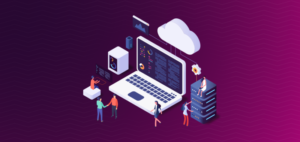Intellyx BrainBlog for Zoho by Jason Bloomberg
No word strikes more fear into the hearts of technology executives than modernization. In spite of our best intentions, today’s technology purchases invariably become tomorrow’s legacy burden. Eventually, mounting technical debt ends up threatening modern strategic initiatives like digital transformation.
Legacy modernization has been the CIO’s ball and chain for decades, largely because the options for resolving the challenge of legacy software were scant and expensive. But not dealing with the problem meant risking the possibility that legacy assets will impede future digital initiatives, and no company can afford such roadblocks.
When it comes down to it, digital transformation depends upon modern technology, which in turn depends upon successful modernization.
Better approaches to modernization
Legacy modernization has traditionally been a black and white affair: either rip out all the old technology and start fresh, or make do with it, layering new technology onto the old, to extend its useful lifetime. Afraid of the risks of the first option, most IT executives opted for the second, for better or worse.
Today, modernization is no longer a two-sided dilemma. There are now many options to add to the mix.
In some cases, it’s possible to modernize software in place—for example, on mainframes, as modern mainframe technologies enable organizations to continue to leverage the venerable hardware platform as they modernize its software.
In other situations, it’s possible to lift and shift—moving software from less flexible platforms onto the cloud, where in some cases, it can take advantage of the architectural benefits of scalability, elasticity, and on-demand availability.
Now, with the rise of microservices, comes a third, relatively new, trend—modernizing elements of complex, distributed applications while leaving other components alone, or updating different parts of such applications at different times, depending upon the needs of the business.



